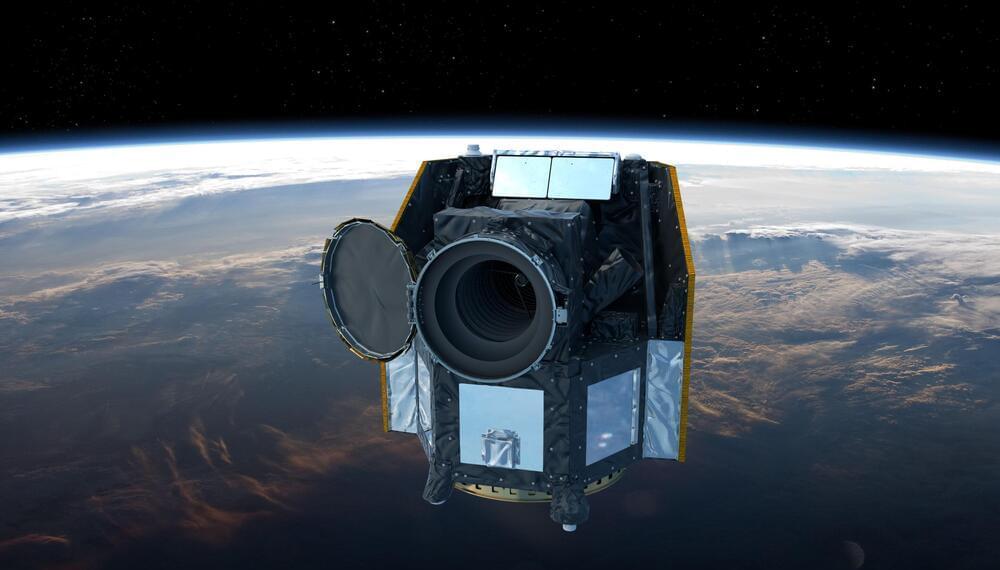One promising planet turned out not to have an atmosphere. But there are six more where it came from.



Google’s aiming to make it easier to use and secure passwords — at least, for users of the Password Manager tool built into its Chrome browser.
Today, the tech giant announced that Password Manager, which generates unique passwords and autofills them across platforms, will soon gain biometric authentication on PC. (Android and iOS have had biometric authentication for some time.) When enabled, it’ll require an additional layer of security, like fingerprint recognition or facial recognition, before Chrome autofills passwords.
Exactly which types of biometrics are available in Password Manager on desktop will depend on the hardware attached to the PC, of course (e.g. a fingerprint reader), as well as whether the PC’s operating system supports it. Beyond “soon,” Google didn’t say when to expect the feature to arrive.

Two AI tools will be added to Adobe Express: the ability to generate images from text prompts and text effects, where lettering can filled with textures. For example, you might apply a pink balloon… More.
Adobe is bringing its AI tools to Adobe Express as part of a huge upgrade to the content creation service.
Adobe Express can be used to create anything from social media posts to printed posters to promotional flyers. An update being announced today will add even more feathers to its bow, including the ability to create video content and edit PDFs.
However, perhaps the most eyecatching new addition is the Adobe Firefly AI tools that the company has been beta testing for the past couple of months.
The haze of smoke from Canadian wildfires that smothered New York and New England in dark clouds Tuesday night is expected to linger throughout the week, and intensify in some areas as officials urge residents to stay inside and schools cancel outdoor activity amid “unhealthy” and “hazardous” air-quality levels.
New York City
Officials warn pollutants in the air can cause difficulty breathing, headaches and fatigue, and can be unhealthy, especially for people with respiratory illnesses.

😀 😍 Basically chat gpt 4 is a big disruptive program but the positives outweigh the negatives. For instance we could get our usual work done really fast in seconds instead of hours. Much like the Jetsons chat gpt4 will allow us to be free of the grind of too much labor or work but allow for better lifestyles. Too often mental labor was too hard to do or only for people who were talented enough but now anyone can do any task with chat gpt4 this will create a greater AI gold rush also allow for better start ups to achieve what was once only for the few.
Explore the transformative impact of AI in reshaping work hours and fostering flexibility for a healthier work-life balance.

Tobi Alaji grew up as an artist who loved designing and creating new things. Today, she has merged her love for art and skill in software development to build the tech empire, ‘TECHTEE’ which she runs. TechTee is a digital agency and software house that creates an all-around digital experience by combining the best software with the most intriguing customer-centered designs.
TechTee is one of the world’s first Black-owned and woman-founded digital agency according to nftnow. The company boasts of collaborations with famous companies like Deutsche Bank, La Perla, NBC, M&S, and Apple, among others.
In an interview with Business Leader, she shared that she never wanted to own a business growing up because she never understood what it entailed. However, when she was 17, Tobi taught herself Java from a software development book she picked in the Shepherds Bush Library. Since then, she continued to teach herself and practice coding.

With the help of the CHEOPS space telescope an international team of European astronomers managed to clearly identify the existence of four new exoplanets. The four mini-Neptunes are smaller and cooler, and more difficult to find than the so-called Hot Jupiter exoplanets which have been found in abundance. Two of the four resulting papers are led by researchers from the University of Bern and the University of Geneva who are also members of the National Centre of Competence in Research (NCCR) PlanetS.
CHEOPS is a joint mission by the European Space Agency (ESA) and Switzerland, under the leadership of the University of Bern in collaboration with the University of Geneva. Since its launch in December 2019, the extremely precise measurements of CHEOPS have contributed to several key discoveries in the field of exoplanets.
NCCR PlanetS members Dr. Solène Ulmer-Moll of the Universities of Bern and Geneva, and Dr. Hugh Osborn of the University of Bern, exploited the unique synergy of CHEOPS and the NASA satellite TESS, in order to detect a series of elusive exoplanets. The planets, called TOI 5,678 b and HIP 9,618 c respectively, are the size of Neptune or slightly smaller with 4.9 and 3.4 Earth radii.


A common nutrient found in everyday foods might be the key to a long and healthy life, according to researchers from Columbia University.
The nutrient in question is taurine, a naturally occurring amino acid with a range of essential roles around the body.
Not only does the concentration of this nutrient in our bodies decrease as we age, but supplementation can increase lifespan by up to 12 percent in different species.
September 2021: In an interview with tech YouTuber iJustine, Cook said that he was AR’s number one fan and reiterated his hopes for it as a collaboration tool.
I am so excited about AR. I think AR is one of these very few profound technologies that we will look back on one day and went, how did we live our lives without it? And so right now you can experience it in thousands of ways using your iPad or your iPhone, but of course, those will get better and better over time.
Already it’s a great way to shop, it’s a great way to learn. It enhances the learning process. I can’t wait for it to be even more important in collaboration and so forth.